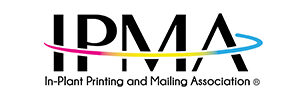Part of IPMA’s COVID-19 and the In-Plant Industry Blog Series
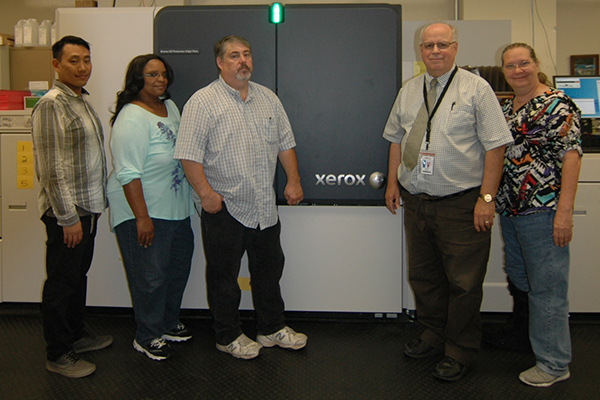
The initial impact from Covid-19 began in March. Schools were closed for spring recess and the decision was made that students would not return to school the following week. While some online educational resources were in place for middle and high school students, nothing had been established for elementary students.
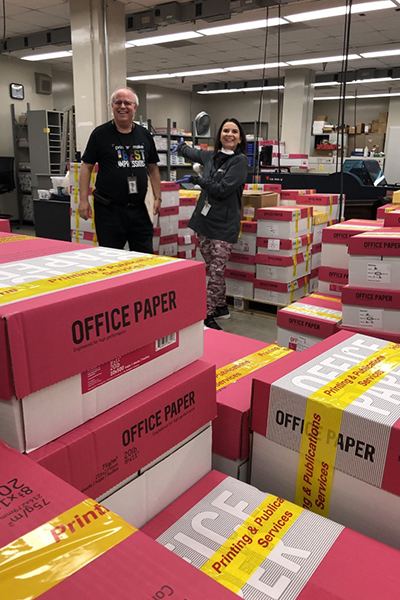
There were six different packets (one per grade) with a total of 1.2 million sheets and 2.4 million pages. Each packet was printed in color, collated and corner stapled, and ranged from 68 to 88 pages. The packet contained materials sufficient for two weeks of study at home.
Production began on a Monday – the same day we had scheduled training for our new Baltoro. The actual installation of the Baltoro had been completed the previous Friday. We needed to proceed with the training so one staff member was pulled out of the training group. He ran the Brenva while the other operators received training on Baltoro. On the second day, the Xerox trainer said she could continue training while also letting us run packets on the Baltoro in addition to the Brenva.
As we monitored progress, it became clear that more resources were needed. I utilized a commercial shop that actually had two plants. Production continued on both Brenva and Baltoro and at both of the commercial shop’s facilities. We were using our inkjet equipment while the commercial shop was using toner based equipment.
Production continued day and night including Saturday and Sunday. Completion was required so that Omaha Public Schools truck drivers could deliver completed packets to each elementary school in time for parent pickup on Monday morning. Deliveries were made throughout the week as packets for individual schools were completed. Ultimately 79% of the production was done internally and 21% at the commercial shop. The cost per page of the internal production was $0.0548 while the cost per page of the work done commercially was $0.1466.
We then began “Round 2” and planned for all production to be done internally. We made it through around 40% and production stopped and staff were sent home. The spread of Covid-19 in the community was high enough our leadership did not want any staff working.
After about two weeks, our printer operators returned and began printing smaller quantities of packets to finish out the school year.
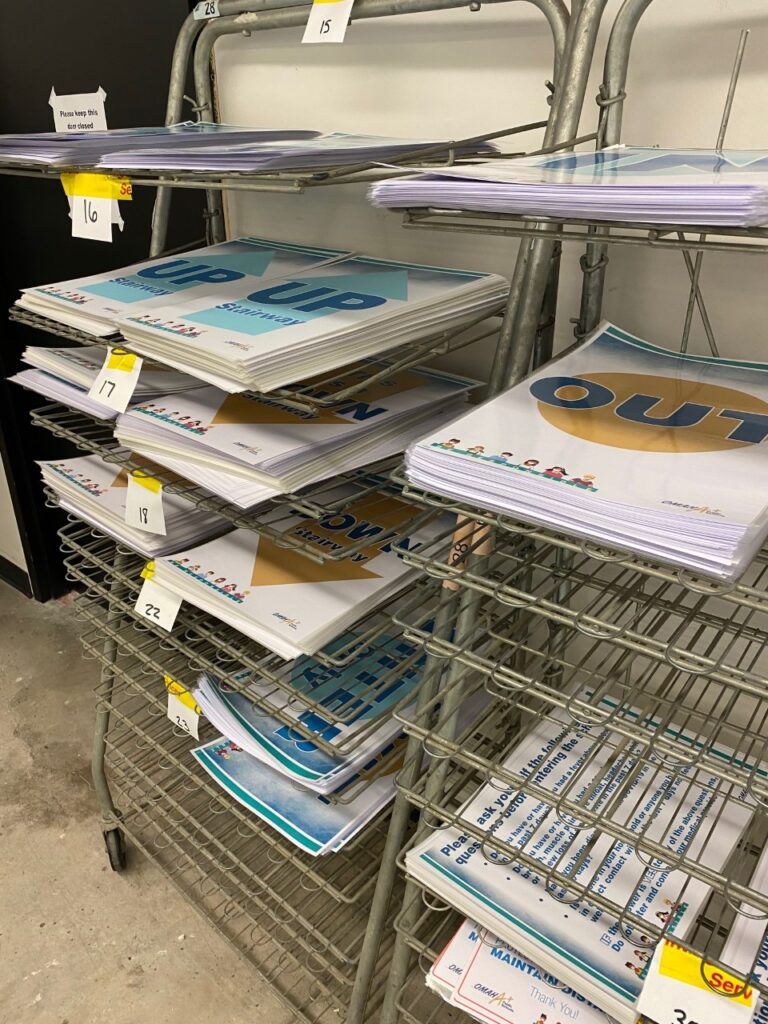
Production also began on outdoor signage for fields and playground equipment using our Colorado 1640 wide format printer. Our goal was to minimize children playing on playground equipment and teenagers and adults congregating on athletic fields and basketball courts.
During the spring we installed our Graphic Whizard PT 33LSC laminator. We had previously discouraged lamination due to the extensive labor required with typical roll-fed laminators – both laminating labor and cutting the laminated product out. Our new lamination method reduced the cost of lamination and made lamination, which is frequently desired in education, more affordable. When we purchased the Graphic Whizard, we had no idea the volume of lamination would be so great due to a pandemic.
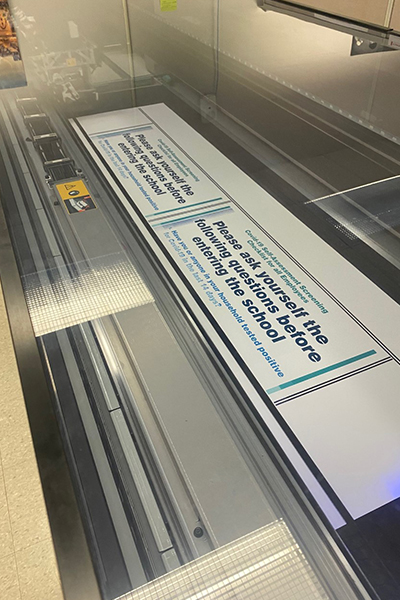
In early June we created around 40 different signs for use when staff and students returned to school in August. The size and production method varied. Most were 11×17. They were printed in color on our Baltoro or Brenva. A few were 30×20 and were printed on our Colorado.
We experimented with paper weight and our two “standard” laminating films (3 mil and 5 mil). We determined there was no need for heavy papers since the 8.5×11 and 11×17 signs would be laminated. We decided to use 5 mil lamination and the paper was a 24# color copier grade. We purchased all of the 3 mil and 5 mil gloss laminating film in inventory in North America and began printing.
We prepared a document containing a thumbnail of each sign and ordering instructions. We didn’t want to wait to print until after orders had been received so we had estimated the quantity to print of each sign. As orders started coming in, we printed more. And then printed more again. And again bought all of the available film in North America. We changed to matte finish and also to 1.5 mil since our preferred film wasn’t available.

We then began creating additional signs in other languages. We currently have signs in English, Spanish, Karen, and multi-lingual. And more lamination film is again on order and by the time this article is being read, the film would have arrived and even more signage will have been printed and laminated.
During July we printed permission packets in 5 languages to go with the 54,000 iPads our District had purchased for remote learning. And then “get to know me” cards illustrating some basic iPad procedures. All of this support material was packaged for each school and distributed for parents to pick up either in advance of the iPad or simultaneously.
In July Omaha Public Schools announced multiple methods for school attendance. Parents could sign up for 100% remote or a plan that had 50% of students attending Monday and Tuesday, and 50% of students attending Thursday and Friday. Wednesday would alternate between each group. On days when not attending in school, those students would receive remote instruction. And a small group would be attending Monday through Friday.
We printed and mailed information to each student listing his/her specific schedule and other resource information. This required delicate timing. If sent too early, the chance of a subsequent change in attendance due to Covid-19 would be greater. If sent too late, parents wouldn’t have correct information in time for the first day of school.
We ultimately planned on parents receiving the mailing on Wednesday, Aug. 5 with the first day of school being Tuesday, Aug. 11. All along we knew that situations could force a change in plans. And that’s exactly what happened. Covid-19 infection rates increased so much that on Friday, Aug. 7 Omaha Public Schools switched to 100% remote for at least the first quarter (nine weeks).

Steve is a life-long printer, having learned to operate a press while working part-time in his father’s commercial printing company during high school. He began working fulltime when the company abandoned all hot metal typesetting and letterpress and concentrated on typesetting and offset printing. He assisted in the implementation of high quality photo-typesetting equipment as the business transitioned into a typesetting company offering services to printers, artists, advertising agencies and other users of typesetting.
The business closed and Steve joined Omaha Public Schools as the manager of the in-plant department known as Printing & Publications Services in 1989 and led the ultimate transformation from photo-typesetting, offset printing and xerographic copying into the digital age. Along the way, two sheet fed high-volume inkjet printers were installed.
